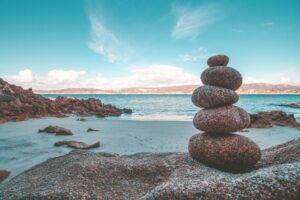Komyo ReikiDo

The Meaning of Reiki and Komyo ReikiDo
Reiki: A Japanese term, the meaning of which is broken into 2 parts…
Rei: The energy of the Universe, ethereal, mysterious, something sacred
Ki: The atmosphere, something subtle, something numinous, the energy of the earth
Put together, "Reiki" means…
"an ethereal and sacred energy of the heavens and the earth (or of the Universe) which animates and sustains all life, in a word, the life-giving energy."
-Hyakuten Inamoto, founder, Komyo ReikiDo
Which "Reiki" Do You Mean?
Reiki means 2 things at once:
the energy of the Universe, and also
the system by which we consciously channel this energy of the Universe.
So as a reminder, which do you mean when you say "Reiki"...

...the Reiki energy of the Universe, or

...the system of Reiki practice?
The Healing Art of Reiki Ryoho
Reiki Ryoho means the healing art, or healing method, of the system of Reiki.
The healing method of Reiki Ryoho was founded by Mikao Usui Sensei in 1922, the year that he attained enlightenment (Satori) at age 57.
Usui Sensei's healing method, named "Usui Reiki Ryoho" was 2-fold: A spiritual and healing practice, devised to improve both mind and body.
Hyakuten Inamoto, Founder of Komyo ReikiDo

Hyakyuten Inamoto Sensei is a Japanese-born Buddhist monk (Jodo Shu/Pure Land school) born in 1940. He lives in Kyoto. Inamoto Sensei studied Reiki under Chiyoko Yamaguchi.

Chiyoko Yamaguchi Sensei and Hyakuten Inamoto Sensei
Komyo Reiki Kai was introduced in 1998 by Inamoto Sensei, reflecting the Chujiro Hayashi Sensei style (Hayashi shiki, or in full, Hayashi Shiki Usui Reiki Ryoho).*
Hyakuten Inamoto Sensei's lineage chart traces back to Usui Sensei as follows:
- Mikao Usui (1865-1926)
- Chujiro Hayashi (1879-1940)
- Chiyoko Yamaguchi (1921-2003)
- Hyakuten Inamoto (1940-)
*Chujiro Hayashi was a student of Mikao Usui Sensei and the first-ever Reiki Master. Hayashi Sensei made 13 Reiki teachers (shihans), among them Hawayo Takata (pronounced TAK'ata), who eventually introduced the system of Reiki to the West. Komyo ReikiDo is part of the Hayashi tradition, which is the majority of the Reiki practiced in the world.

Chujiro Hayashi Sensei (1879-1940)

Hawayo Takata Sensei (1900-1980)
Japanese Versus Western Reiki Lineages
The system and practice of Reiki, as Westerners know it, originated in Japan as "Usui Reiki Ryoho." Mikao Usui's enlightenment experience on Mount Kurama in March of 1922 led him to share his gift for healing with other people. Thus, in 1922, Usui Sensei opened his teaching and healing center, "Usui Reiki Ryoho Gakkai," in Aoyama, Tokyo. It was here, in Usui Sensei's Gakkai (group), that his unique system of Reiki practice and healing was developed, inspired directly by his enlightenment on Mt. Kurama (Kurama-yama). These facts establish the Japanese origins of the system of Reiki.
Yet, within the many lineages of Reiki practice in the world, some systems are "Western" and others are traced directly back to Japan. How is this explained?
- The system of all Reiki originated with Mikao Usui, in Japan
- Usui Sensei's system of Reiki was taught by his student Chujiro Hayashi, one of the directors of the Usui Reiki Ryoho Gakkai
- Hayashi Sensei taught the Japanese-American Hawayo Takata in the mid-1930s. Takata Sensei then brought the system of Reiki to Hawaii. This is how Reiki was established in the West
- Hayashi Sensei also taught Chiyoko Yamaguchi in 1938, in Japan
- Chiyoko Yamaguchi Sensei taught Hyakuten Inamoto, in Japan
- Since Takata Sensei did not teach Inamoto Sensei (the founder of Komyo ReikiDo), the system of Komyo ReikiDo remains a Japanese-based lineage
This is simply to discern between Western and Japanese Reiki lineages. All lineages are valuable. Within each Reiki lineage, no matter which system of practice is taught, the energy of the Universe is the true teacher, leading us onward in our spiritual and healing journey.
Also, we honor Takata Sensei, even if she is not part of the Komyo ReikiDo lineage. We owe her a debt of gratitude for bringing the Japanese system of Reiki to the West, to Hawaii. Because of Takata Sensei, and her 22 Reiki Masters, we in the West have the gift of Reiki, even if we never travel to Japan to learn it.
The Characteristics of Komyo ReikiDo
Komyo ReikiDo is a Japanese-based lineage, traceable back to Usui Sensei via teachers who lived in Japan, as described above.
In 2016 the name Komyo Reiki Kai was changed to Komyo ReikiDo, to accurately reflect the emphasis on spiritual growth and development through the practice of Reiki, not just hands-on healing.
Komyo = Light or illumination
Reiki = Sacred energy of the universe
Do = Spiritual path or Way
All Reiki practice, no matter what the lineage, benefits both mind and body.
The Komyo ReikiDo system of practice opens the way for us to go deeper, discovering our true spiritual nature. This traditional Japanese Reiki practice leads us to the highest, purest objective of spiritual awakening-the "Absolute Inner Peace" known as enlightenment, or Satori.
KRD has practitioners and teachers all over the world, and Inamoto Sensei travels across the world to teach as many students as possible.
Keep It Simple
The hallmark of the Komyo ReikiDo system of Reiki is "keep it simple."
"Simplicity is a key to the Truth."
-Hyakuten Inamoto
The Komyo ReikiDo Motto
Go placidly
In the midst of
Praise or blame.
"Praise or blame"
It's one or the other. This is how we live here on Earth, with all those pairs of dual opposites in our lives.
Examples of Duality: Calm/Excited; Winner/Loser; Strong/Weak; Joyful/Angry;
Success/Failure; Right/Left; Up/Down; Good/Evil; Praise/Blame. You get the picture.
"Go placidly" means to rise above our "familiar world" of duality.

Nonattachment
Inamoto Sensei teaches us to practice a central term in Buddhism: Nonattachment.
We aim to practice nonattachment, or equanimity, in our Reiki practice.
A paradox, to be sure, to commit to practicing nonattachment!
Attachment is seen as a form of suffering in Buddhist thought.
Letting go of what we are attached to is a release from suffering.
This is freedom, to rise above our world of endless duality, even for a moment.
The Komyo ReikiDo Practice Motto
"Place your hands,
Surrender,
Smile"
-Hyakuten Inamoto
The 5 Precepts (Gokai)
Today Only:
Do not anger
Do not worry
With thankfulness
Work diligently
Be kind to others

How to Engage in the 5 Precepts?
The 5 Precepts (Gokai) can be meditated upon, quietly or chanting aloud, in the morning and evening, as an example.
"Chanting is okay. Practice is better."
-Hyakuten Inamoto
And Yes...
In 2006, Komyo Reiki Kai (later changed to Komyo ReikiDo) was the first Reiki lineage I studied.
In 2010 I became a teacher (shihan).

...I Teach Komyo ReikiDo. Visit My Komyo ReikiDo Training Page
And also...
...I Provide Reiki Sessions: In Person or Over a Distance
I offer in-person Reiki sessions in Rosendale, NY. Fee: $100 for 60 minutes
I also offer distance Reiki sessions. Fee: $60 for 30 minutes
Contact me at LizWassell@gmail.com to book your session.
